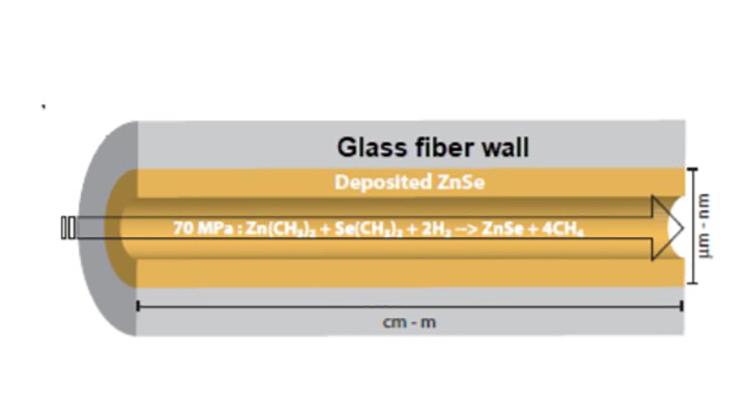Improved Aluminosilicate Glasses
ID# 2020-5073
Technology Summary
Previous efforts to develop high power, tunable, 2-5 µm fiber lasers have been compromised by thermal loss and alignment issues with the fibers. Bulk TM2+:ZnSe lasers have been limited by the large thermo-optic coefficient of ZnSe, which leads to thermal lensing and mode instability at high powers.
The inventors fabricated new glass compositions with properties tailored to work as a cladding capable of undergoing the post-processing of a ZnSe core. The coefficient of thermal expansion (CTE) of the glass cladding matches that of ZnSe. Moreover, the glass transition temperatures (Tg) of the novel compositions are all sufficiently high to withstand the post-processing temperature of 750oC. The researchers drew these glass compositions into fibers and then uniformly deposited and annealed a ZnSe core.
Application & Market Utility
The invention’s glass protected ZnSe core optical fibers, which have losses as low as 0.5 dB/cm, have commercial applications as free space communications, remote chemical sensing, spectroscopy, and medicine. The invention’s glass compositions may be especially of value for optical systems requiring no or substantially low absorption of light. The glass compositions have uses in other applications, such as high thermal expansion core glasses for all-glass laminates.
Next Steps
Samples for evaluation by prospective licensees

